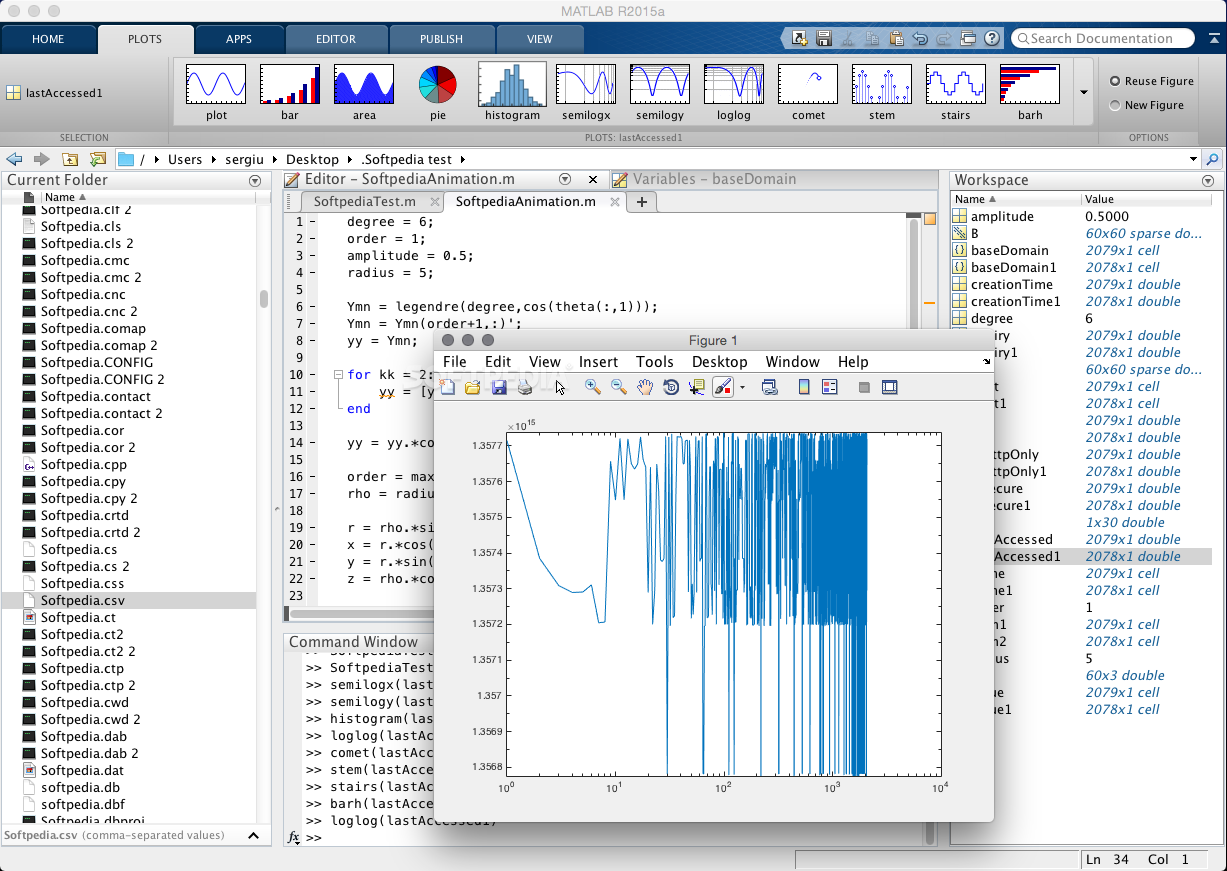

To adjust the settings used by the app to find signal peaks, click Peaks and select Peaks Settings. To annotate the measured peaks on the time plot, click Peaks and select Label Peaks. See column right for citation information. Toggle Peaks to measure signal peaks with the Find Peaks option. Please cite findpeaks in your publications if this is useful for your research.

All kinds of contributions are welcome!.Example: Denoising images using Lee, Kuan, Fastnl, Bilateral, Frost, Mean, median).

Example: Find peaks in SAR/SONAR images).Example: Find peaks and valleys in stockmarkets (Facebook).Example: Find peaks and valleys in stockmarkets (Bitcoin).Les navigateurs web ne supportent pas les commandes MATLAB. In Matlab, the findpeaks statement gives provision to find the peaks as well. Pour exécuter la commande, saisissez-la dans la fenêtre de commande de MATLAB. Overall, finding eigenvalues and eigenvectors in Matlab is a simple process. To modify the peak finder settings in the scope interface. Example: Conversion from 2d to 3d mesh plot) For more information on the algorithm, see the findpeaks (Signal Processing Toolbox) function.Example: Find peaks in an image (2D-array).Example: Find peaks in 1D-vector with high number of samples.Example: Comparison peak detection methods.Example: Find peaks in 1D-vector with low number of samples.On the documentation pages you can find detailed information about the working of the findpeaks with many examples. Import findpeaks package from findpeaks import findpeaks Documentation pages
#Matlab findpeaks install
⭐️ Star this repo if you like it ⭐️ Install findpeaks from PyPI pip install findpeaks
#Matlab findpeaks software
To make sure that peaks can be detected across global and local heights, and in noisy data, multiple pre-processing and denoising methods are implemented. Classification - MATLAB & Simulink - MathWorks United Kingdom Documentation Videos Answers Trial Software Product Updates Classification Classify signal attributes, perform signal segmentation via sequence-to-sequence classification Derive features using time-frequency techniques for signal classification. Of course, you will need an up-to-date distribution of Octave, with the signal package installed from Octave-Forge.Īlthough the function have an interface close to the MatLab findpeaks, it is harder to have the exact same results that with detect_peaks or library findpeaks aims to detect peaks in a 1-dimensional vector and 2-dimensional arrays (images) without making any assumption on the peak shape or baseline noise. Requires a rather complicated and not very efficient setup to be called from Python code. This algorithm allows to make a double sided detection, which means it will detect both local maxima and minima in a single run. Use findpeaks from the Octave-Forge signal package through the oct2py bridge.
#Matlab findpeaks series
astype( int) - 1 print( 'Peaks are: %s' % ( indexes)) Helper function to find peaks in a given continuous valued time series x. Also this is MatLab-style indexation (one-based), # so we must substract one to get back to Python indexation (zero-based). # The results are in a 2D array and in floats: get back to 1D array and convert # peak indexes to integer. 'MinPeakHeight', 6, 'MinPeakDistance', 2, 'MinPeakWidth', 0) Print( 'Detect peaks with minimum height and distance filters.') Does the algorithm allows to define multiple filters? Which ones do you need?Ġ, 6, 25, 20, 15, 8, 15, 6, 0, 6, 0, - 5, - 15, - 3, 4, 10, 8, 13, 8, 10, 3,įrom oct2py import octave # Load the Octage-Forge signal package. Does it require extra dependency? Does is it easy to make it run on a fresh box? You may want the function to work natively with Numpy arrays or may search something similar to other platform algorithms, like the MatLab findpeaks. If you work on very low sampled signal, the minimum distance filter may miss fine granularity tuning. When you're selecting an algorithm, you might consider: Contrary to the MatLab findpeaks -like distance filters, the Janko Slavic findpeaks spacing param requires that all points within the specified width to be lower than the peak. I've also written a blog post on the subject. This is an overview of all the ready-to-use algorithms I've found to perform peak detection in Python.


 0 kommentar(er)
0 kommentar(er)
